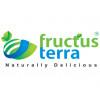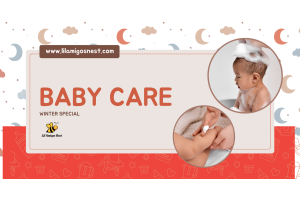Safe vs Unsafe Skincare Ingredients During Pregnancy

Introduction
Welcoming a new life brings joy and excitement, but it also calls for careful attention to safe pregnancy practices, including choosing the right products. For expecting mothers, understanding pregnancy skincare is essential to protect both you and your baby. With the right skincare tips, you can maintain a healthy glow without risking your well-being.
In this blog, we’ll explore safe pregnancy ingredients and highlight unsafe skincare for pregnancy, ensuring your maternity skin care routine remains effective and secure. From motherhood milestones to daily pregnancy tips, let’s dive into what works and what to avoid.
Understanding Skin Changes During Pregnancy
Pregnancy hormones can cause significant changes in your skin. Many women notice increased sensitivity, dryness, or oiliness, and some experience new issues like breakouts or melasma (dark patches). Recognizing these shifts helps you adapt your skincare routine to support a healthy complexion.
During the first trimester, rising estrogen and progesterone levels can make skin appear more radiant for some, while others may face breakouts. As pregnancy progresses, you might experience heightened sensitivity to products, increased pigmentation, and dryness. By acknowledging these developments, you can choose safe, effective products tailored to your changing needs.
Key Safe Ingredients for Pregnancy Skincare
When building a maternity skin care routine, focus on ingredients with a history of safety and proven benefits. These ingredients help address common pregnancy skin concerns without posing risks to you or your baby.
1. Hyaluronic Acid
-
Benefits: Deep hydration, plumping effect, improves elasticity.
-
Why It’s Safe: Naturally occurring in skin, non-toxic, and suitable for sensitive skin.
2. Vitamin C (L-Ascorbic Acid)
-
Benefits: Brightens complexion, boosts collagen, fights free radicals.
-
Why It’s Safe: Topical vitamin C is well-tolerated and essential for skin health.
3. Niacinamide
-
Benefits: Balances oil production, reduces redness, improves barrier function.
-
Why It’s Safe: Gentle, widely used in pregnancy-safe formulations.
4. Ceramides
-
Benefits: Restores the skin barrier, locks in moisture, prevents dryness.
-
Why It’s Safe: Naturally found in the skin barrier, non-irritating.
5. Peptides
-
Benefits: Encourages collagen production, improves firmness, reduces fine lines.
-
Why It’s Safe: Synthetic or naturally derived peptides are gentle and non-toxic.
6. Zinc Oxide & Titanium Dioxide (Mineral Sunscreens)
-
Benefits: Broad-spectrum UV protection, non-comedogenic, gentle.
-
Why It’s Safe: Physically blocks UV rays without chemical absorption.
Ingredients to Avoid: Unsafe Skincare for Pregnancy
Certain skincare ingredients can be harmful when absorbed into the bloodstream or pose risks to fetal development. Always check labels and steer clear of these common culprits.
1. Retinoids (Vitamin A Derivatives)
-
Examples: Retinol, Retin-A (tretinoin), adapalene, tazarotene.
-
Risks: Linked to birth defects when used systemically; dermatologists advise avoiding topical retinoids during pregnancy.
2. Salicylic Acid (High Concentrations)
-
Examples: Many over-the-counter acne treatments; chemical peels with >2% salicylic acid.
-
Risks: High absorption can theoretically affect fetal development; low-dose use (e.g., 2% wash) may be acceptable, but consult your doctor.
3. Hydroquinone
-
Use: Prescription skin-lightening agent for melasma.
-
Risks: High absorption rate and lack of safety data; opt for safer alternatives like vitamin C.
4. Chemical Sunscreens (Certain Filters)
-
Examples: Oxybenzone, avobenzone, octinoxate.
-
Risks: Hormone disruption potential; choose mineral-based sunscreens instead.
5. Formaldehyde & Formaldehyde-Releasing Agents
-
Examples: Quaternium-15, DMDM hydantoin.
-
Risks: Possible carcinogens and irritants; avoid products that list these preservatives.
6. Phthalates
-
Use: Often found in fragrances and nail polish.
-
Risks: Endocrine disruptors linked to developmental issues; opt for fragrance-free or phthalate-free formulas.
How to Read Skincare Labels During Pregnancy
Mastering label reading empowers you to make informed choices. Here’s a step-by-step guide:
-
Check the INCI List: The International Nomenclature of Cosmetic Ingredients (INCI) lists all components in descending order by concentration.
-
Spot Problematic Names: Watch for "-one" and "-ate" endings (e.g., oxybenzone, parabens), and vitamin A derivatives.
-
Identify Safe Actives: Look for hyaluronic acid, niacinamide, peptides, and vitamin C early in the list.
-
Avoid Fragrance: Fragrance can hide phthalates and other irritants; fragrance-free is safest.
-
Consult Reliable Resources: Use reputable pregnancy skincare guides or check with your dermatologist or obstetrician.
Practical Pregnancy Skincare Tips
Beyond ingredient selection, follow these general skincare tips to nurture your skin throughout pregnancy:
-
Gentle Cleansing: Use a mild, sulfate-free cleanser to avoid stripping natural oils.
-
Moisturize Regularly: Apply a hydrating moisturizer morning and night to combat dryness.
-
Stay Hydrated: Drink plenty of water to support skin elasticity and overall health.
-
Sun Protection: Apply a broad-spectrum mineral sunscreen daily, even on cloudy days.
-
Patch Test New Products: Introduce one new product at a time and monitor for reactions.
-
Avoid Over-Exfoliation: Limit physical and chemical exfoliation to prevent irritation.
-
Healthy Diet: Incorporate antioxidant-rich fruits, vegetables, and omega-3s for radiant skin.
-
Rest and Stress Management: Adequate sleep and stress reduction benefit both skin and overall well-being.
Dealing with Common Pregnancy Skin Concerns
Acne and Breakouts
Hormonal fluctuations can trigger breakouts. Opt for a gentle cleanser, non-comedogenic moisturizer, and spot treat with low-dose salicylic acid or azelaic acid.
Dark Spots and Melasma
Also known as the "mask of pregnancy," melasma can be managed with sunscreen and vitamin C. Avoid hydroquinone and chemical peels.
Dryness and Itchiness
Use rich, fragrance-free creams containing ceramides, shea butter, or glycerin. A humidifier can also help maintain moisture.
Stretch Marks
While genetics play a role, keeping skin hydrated with cocoa butter, shea butter, or bio-oil may improve elasticity and minimize marks.
When to Seek Professional Advice
While most topical skincare changes are low-risk, always consult your healthcare provider if you:
-
Experience severe breakouts, rashes, or irritation.
-
Are uncertain about a specific ingredient.
-
Plan to undergo cosmetic procedures like chemical peels or laser treatments.
Your dermatologist and obstetrician can provide personalized recommendations to ensure both maternal and fetal safety.
Conclusion
Navigating skincare during pregnancy may seem daunting, but armed with the right knowledge, you can confidently maintain healthy, radiant skin. Focus on safe pregnancy ingredients like hyaluronic acid and vitamin C, while steering clear of unsafe skincare for pregnancy such as retinoids and certain chemical sunscreens. Remember to read labels carefully, follow general skincare tips, and consult professionals when needed. Embrace maternity skin care as a nurturing ritual that celebrates the beauty of motherhood and supports you through this transformative journey.
Embrace your glow, stay informed, and enjoy a safe, confident pregnancy journey!


























